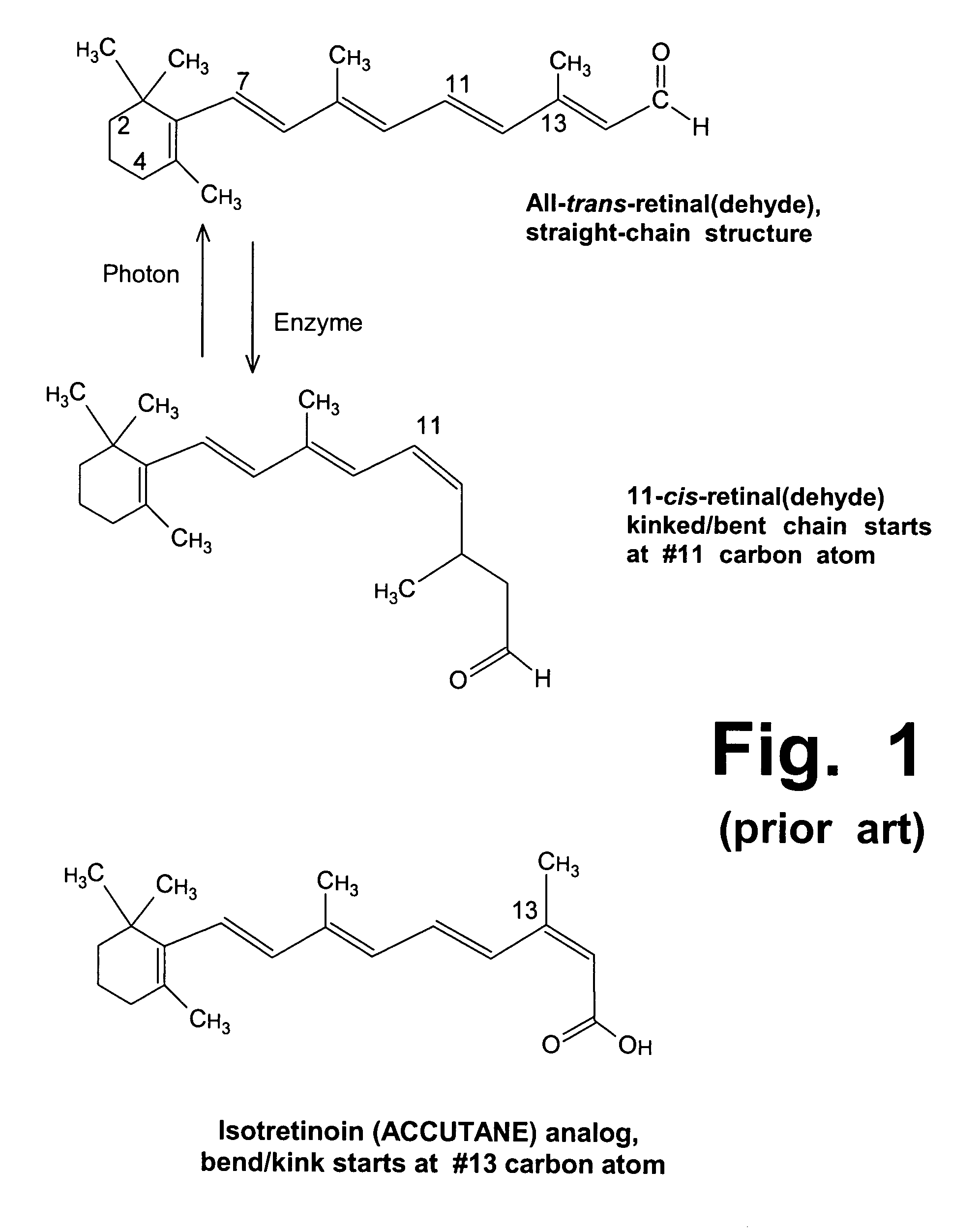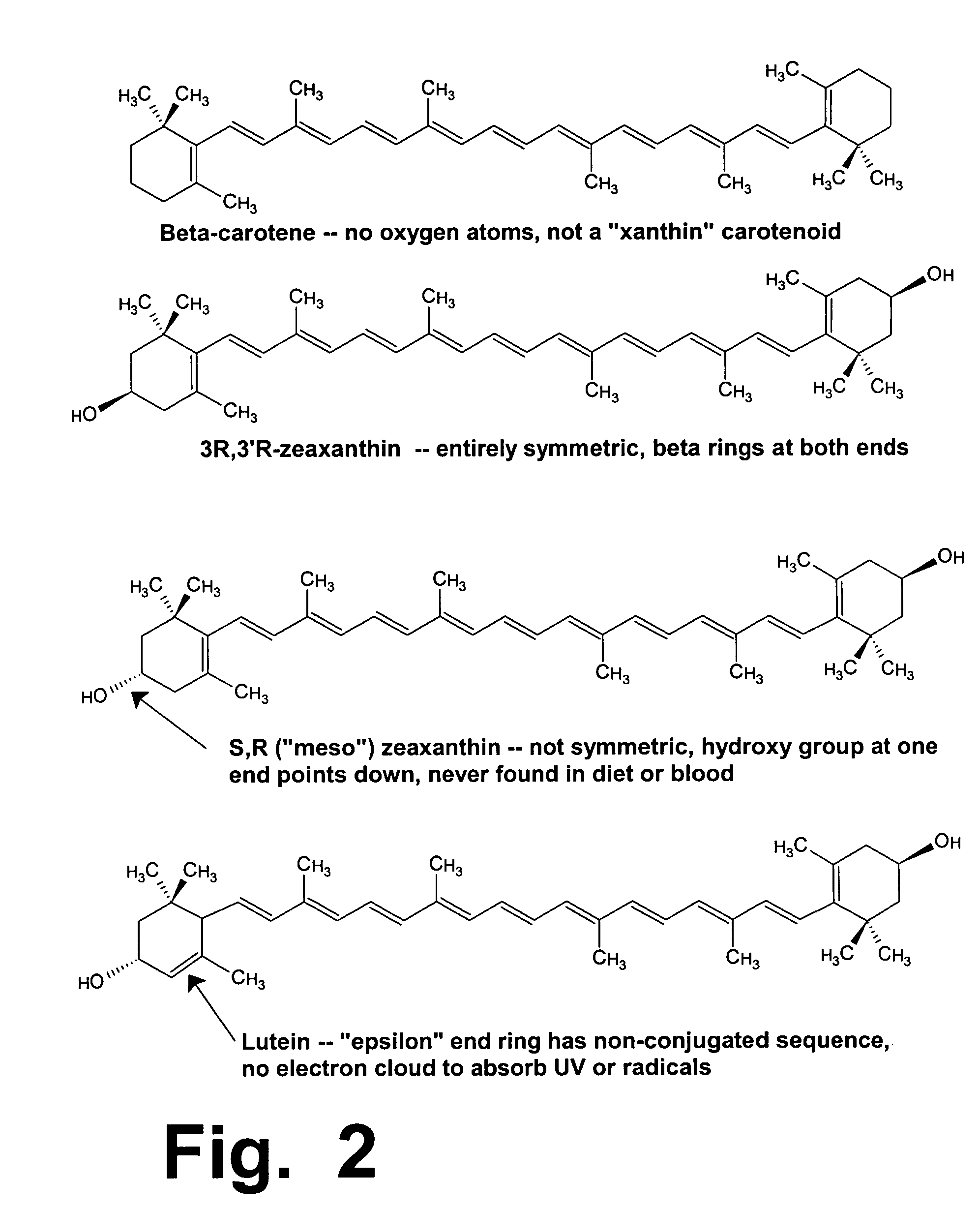Treatment of Stargardt's disease and other lipofuscin disorders with combined retinaldehyde inhibitor and zeaxanthin
a technology of retinaldehyde inhibitor and zeaxanthin, which is applied in the field of pharmacology and ophthalmology, can solve the problems of toxic side effects of isotretinoin, and achieve the effect of slowing down retinal damage and increasing the ability of enzyme inhibitor drugs
- Summary
- Abstract
- Description
- Claims
- Application Information
AI Technical Summary
Benefits of technology
Problems solved by technology
Method used
Image
Examples
Embodiment Construction
[0079] As summarized above, zeaxanthin, a naturally-occurring carotenoid that is present in healthy diets, can offer a potent and highly useful adjunctive treatment for accompanying enzyme inhibitor drugs that can help slow down and prevent the accumulation of unwanted metabolites in the eyes of patients suffering from Stargardt's disease and other retinal disorders characterized by unwanted formation and / or accumulation of one or more metabolites. Such unwanted metabolites can include, for example: (i) the A2E toxin, which is gradually formed in the retinal pigmented epithelium (RPE) layers of the eyes of people who suffer from Stargardt's disease; (ii) excessive and unwanted quantities of all-trans-retinal, which promotes and aggravates the formation of the A2E toxin in Stargardt patients; and, (iii) lipofuscin and / or drusen, which are types of cellular or metabolic debris that are found in the retinas of aging people and people who suffer from various types of retinal debris.
[00...
PUM
 Login to View More
Login to View More Abstract
Description
Claims
Application Information
 Login to View More
Login to View More - R&D
- Intellectual Property
- Life Sciences
- Materials
- Tech Scout
- Unparalleled Data Quality
- Higher Quality Content
- 60% Fewer Hallucinations
Browse by: Latest US Patents, China's latest patents, Technical Efficacy Thesaurus, Application Domain, Technology Topic, Popular Technical Reports.
© 2025 PatSnap. All rights reserved.Legal|Privacy policy|Modern Slavery Act Transparency Statement|Sitemap|About US| Contact US: help@patsnap.com



